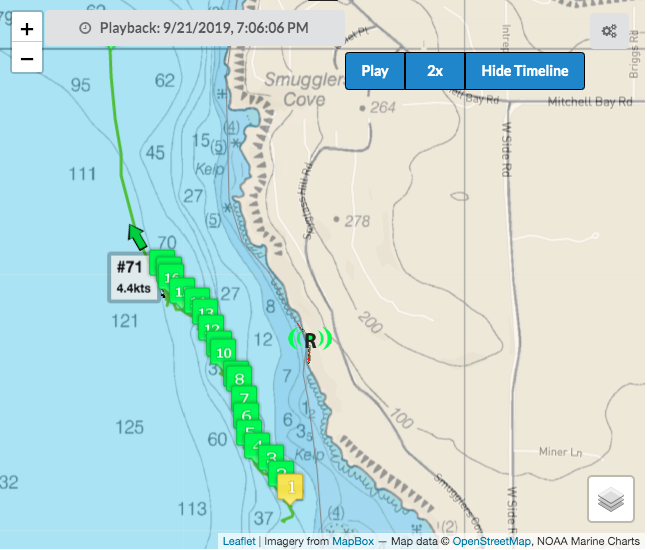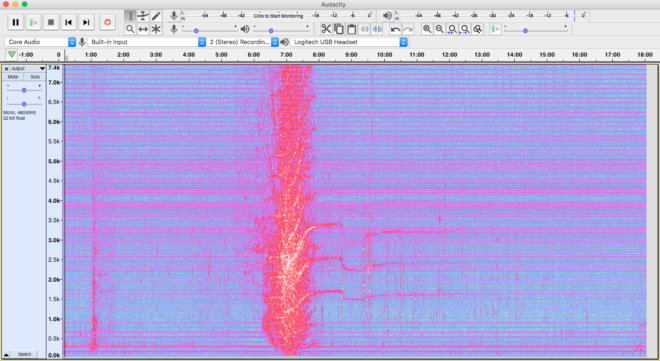In a year when Southern Resident killer whales have been scarce in the inland waters of Washington, today was a rare day indeed (9/21/2019) — one group of SRKWs was sighted within Puget Sound near Everett at the same time another group was heard in Haro Strait and observed along the west side of San Juan Island. Though I missed the hour-long period this evening when they were audible on the Orcasound Lab hydrophone, we can go back and have a listen — thanks to the new Orcasound live-streaming infrastructure that creates an archive in Amazon’s cloud of hard-drives.
Here’s a 30-second example of what it sounded like around 7 p.m. (with some high-pass filtered & with noise reduction to reduce the 60 Hz hum from which the node is currently suffering)…
…and here’s the whole ~18-minute period during which calls were audible…
Here is a lossless FLAC format version (raw data w/o filtering; 70 MB) with what the recording looks like as a spectrogram:

There are a couple of interesting boat noises and lots of K and L pod calls. Normally, we couldn’t say much about the prominent boat noise in the middle of the recording, other than inferring from the changing harmonics that the vessel was altering speed, accelerating as it passed its closest point of approach (CPA), and then maintaining high speed until fading into the background noise (due to its increasing distance).
But thanks to a new partnership between Protected Seas and Beam Reach, we can also examine data from a pilot installation of Marine Monitor (M2) technology at the Orcasound Lab node — radar tracks and associated pan-tilt-zoom camera images from today. They suggest the source of the noise was a recreational fishing boat accelerating northward, heading for home after pulling their trolling gear close to the hydrophone.

